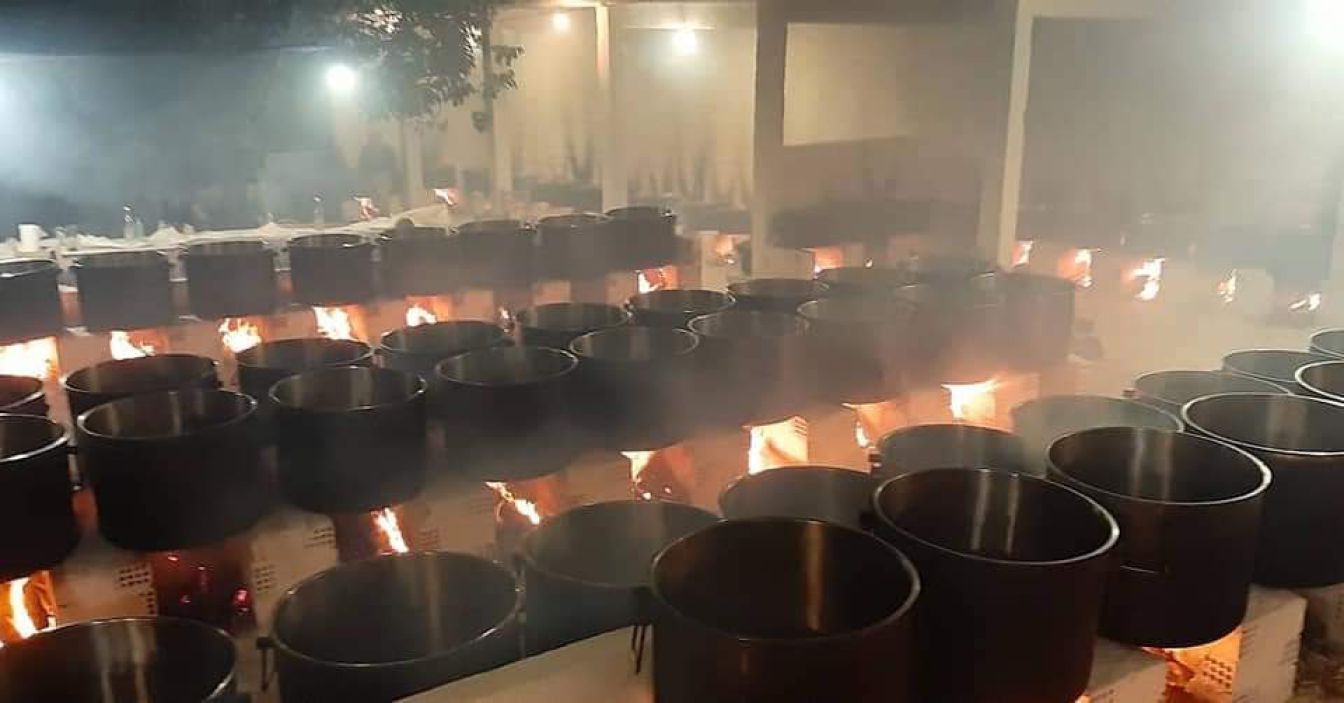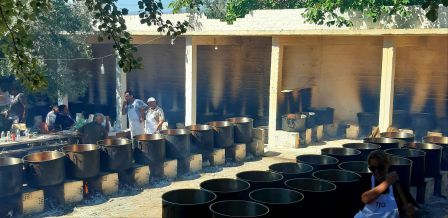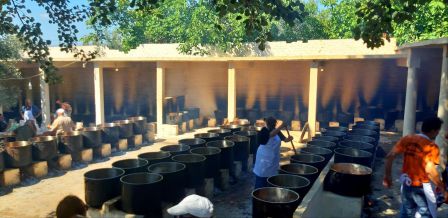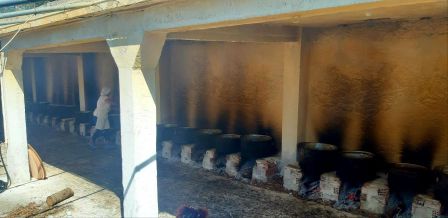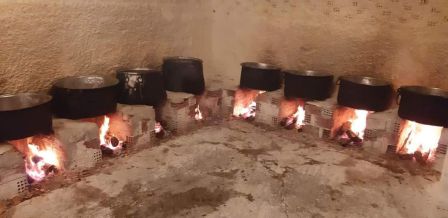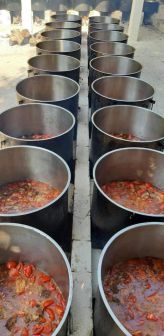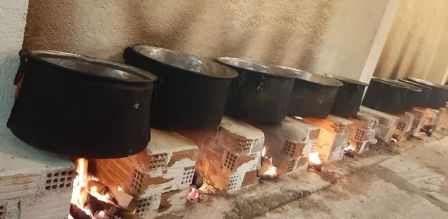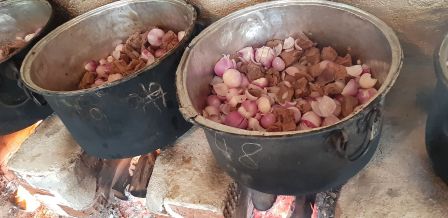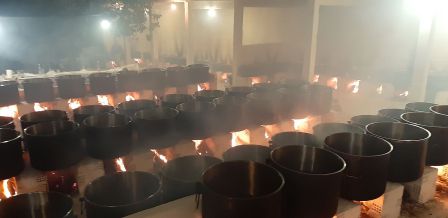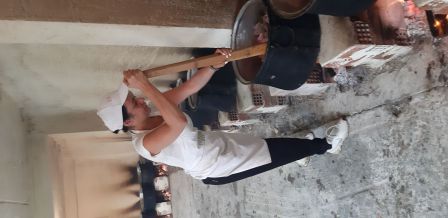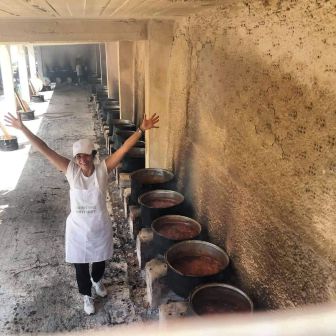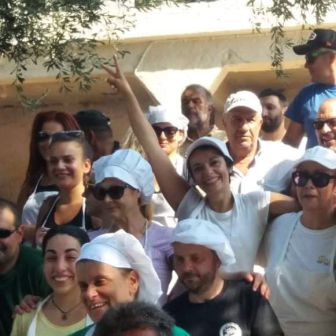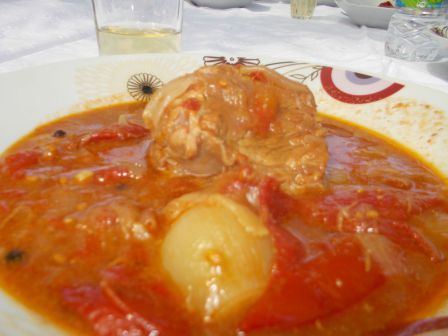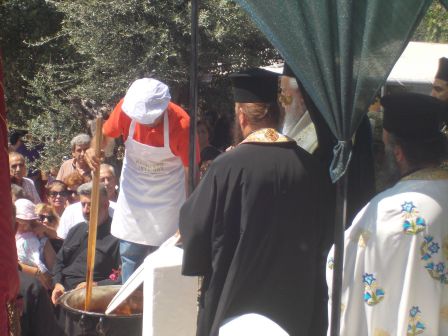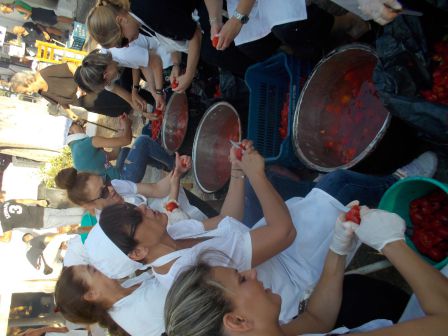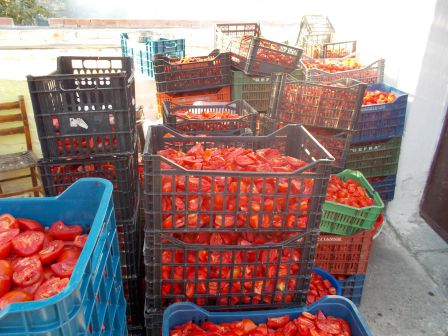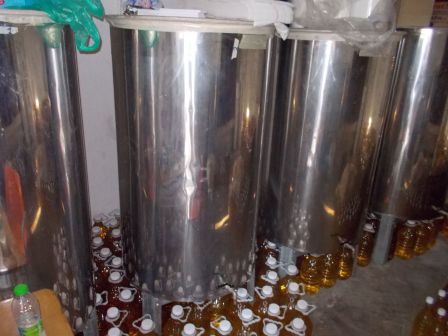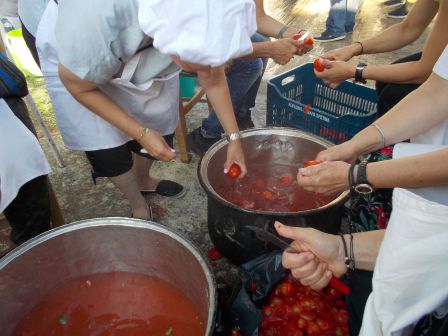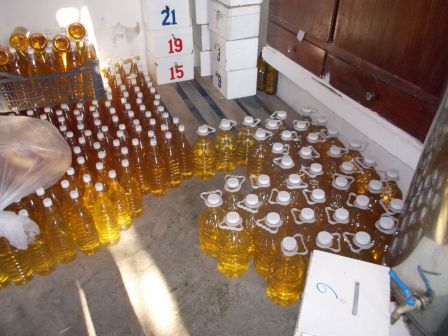The Stifado of Panagia in Oxyliythos, Evia
On August 15th, the day of the Assumption of the Virgin Mary, a divine liturgy is held in the village of Oxyliythos in Evia. It takes place at the Church of Panagia Petriotissa or Chatirianissa.
According to tradition, the icon of Panagia (the Virgin Mary) was initially located in the Petriones. However, at night, it would disappear, only to be found in the branches of a tree in the area where the church stands today in the morning. The tree, although dried up, is preserved as a sacred relic on the northern side of the church and bears an inscription explaining its significance.
The church is believed to have been built between 1280 and 1300 by craftsmen sent by the emperor.
Every year, on the eve of the Virgin Mary's feast day, a divine liturgy is conducted, and concurrently, a gastronomic event (stifado) takes place in the churchyard. This event is designed to accommodate people from the surrounding villages as well as visitors from Athens.
The process involves simmering the stifado slowly over an open flame with wood, imparting a unique flavor and aroma. Each cauldron yields around 50 servings. Preparation begins the previous day, with volunteers from nearby villages cutting the meat, cleaning the onions, and ensuring that everything is properly prepared to avoid any issues the next day.
The procedure starts with placing the beef into the cauldrons at 5 in the morning and boiling it without adding any ingredients. Once the liquids are drawn out, it is sauteed with oil, and then onions, garlic, tomatoes, and wine with spices (salt, pepper, bay leaves, allspice) are added towards the end.
White wine is used because red wine in such large quantities would make the stifado too heavy, considering that people of all ages, from children to the elderly, partake in it.
After the conclusion of the Divine Liturgy, the Metropolitan of Karystos blesses the cauldrons, and then the stifado is distributed to the people. They can either take it home or sit at the tables to enjoy a communal meal, creating a large gathering of people celebrating together.
LATEST RECIPES
GET LATEST UPDATES
Newsletter Subscribe
FEATURED ARTICLE

GET LATEST UPDATES
Newsletter Subscribe



